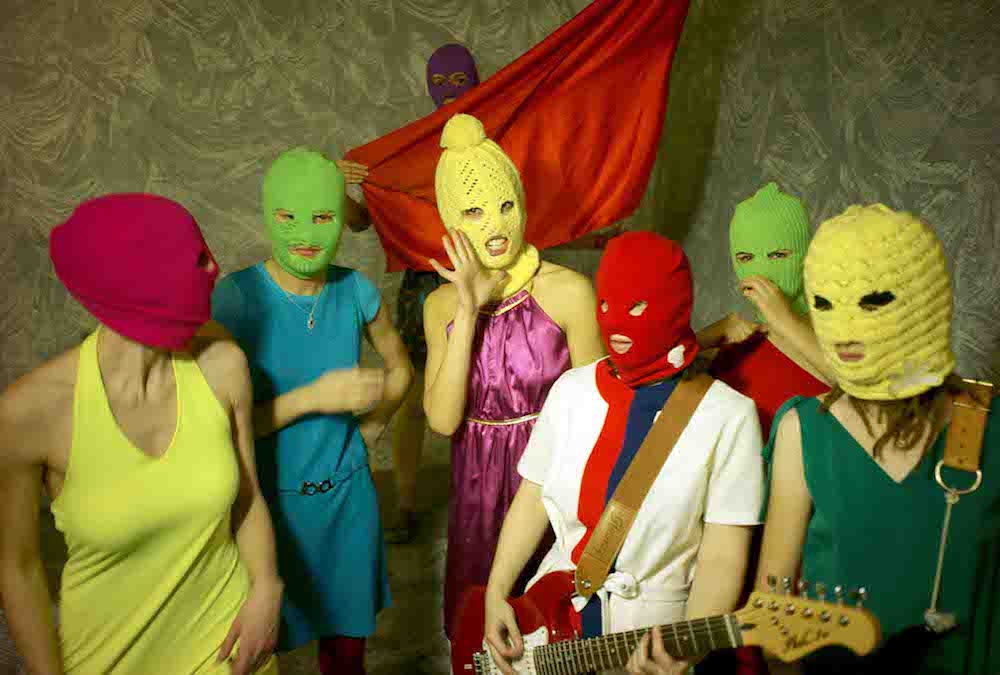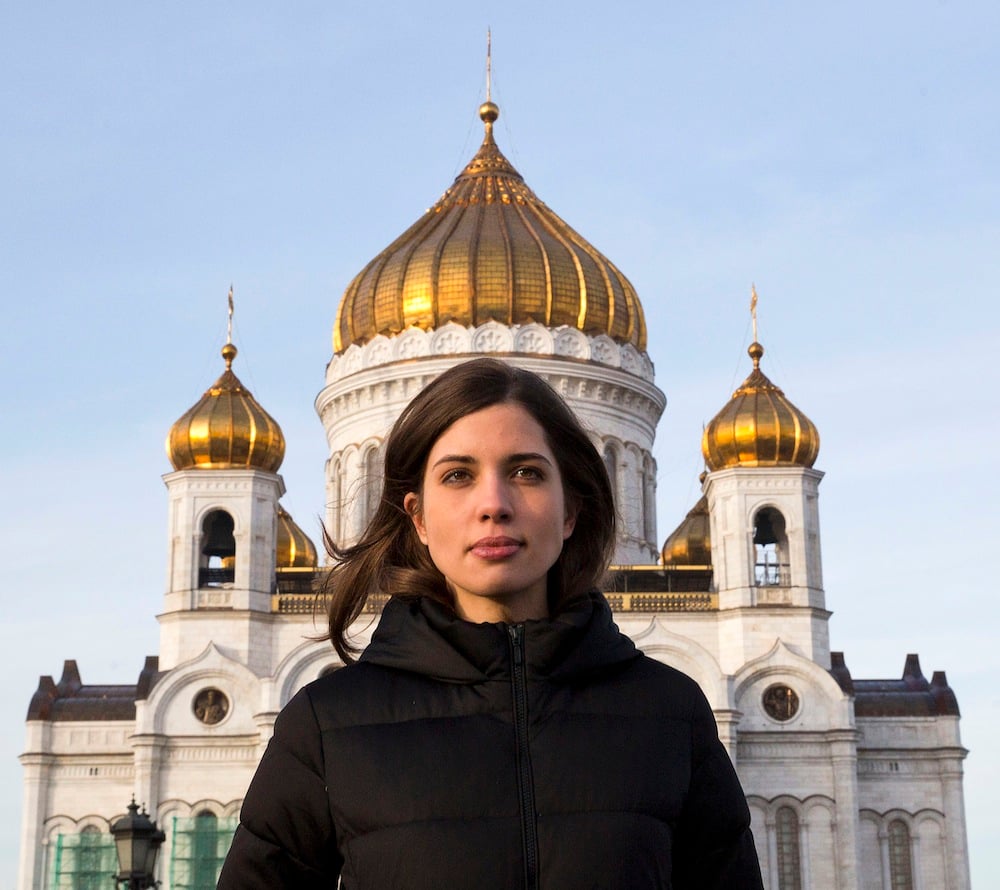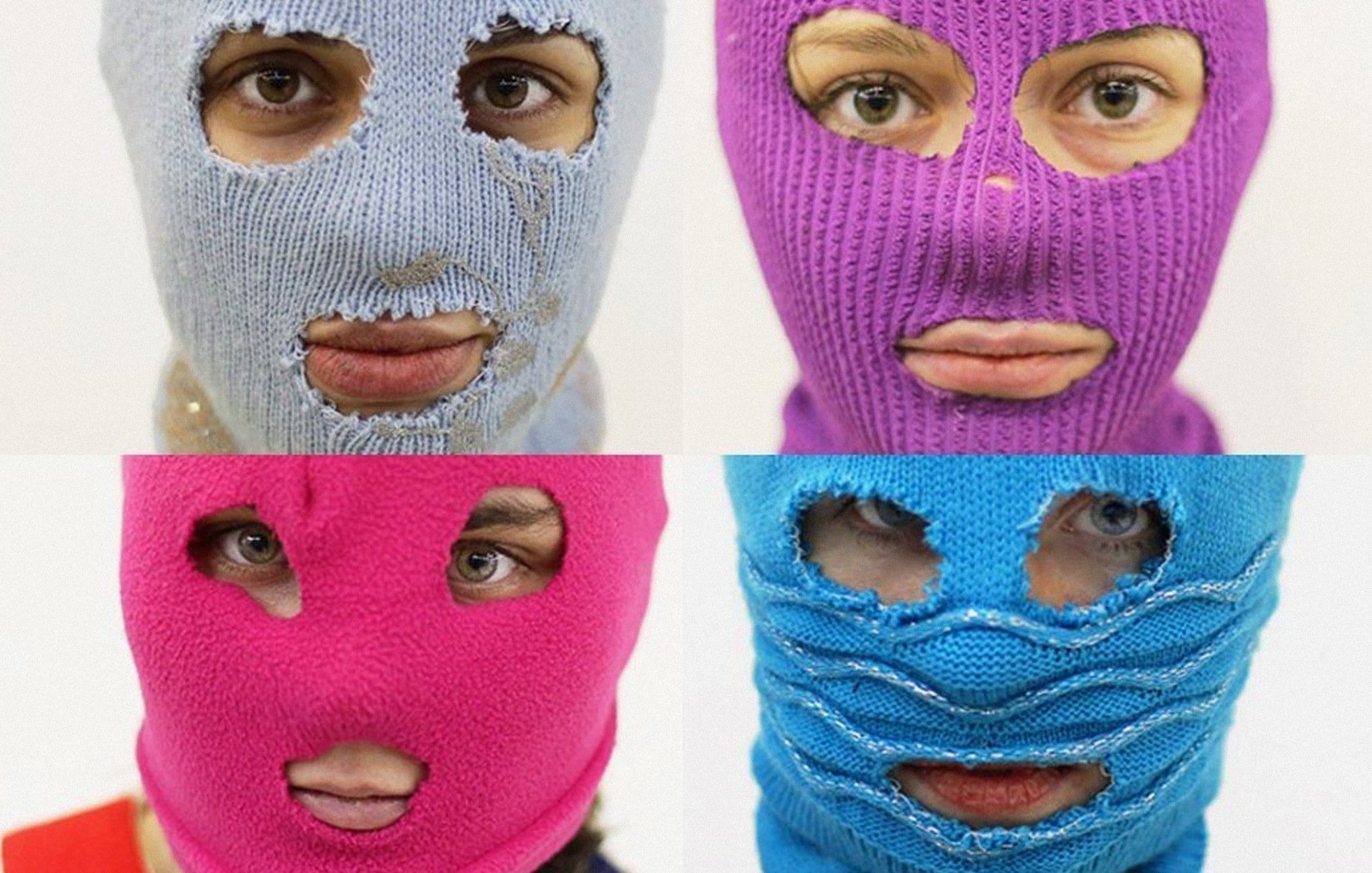Pussy Riot at the Saatchi Gallery: has the commodification of protest gone too far?
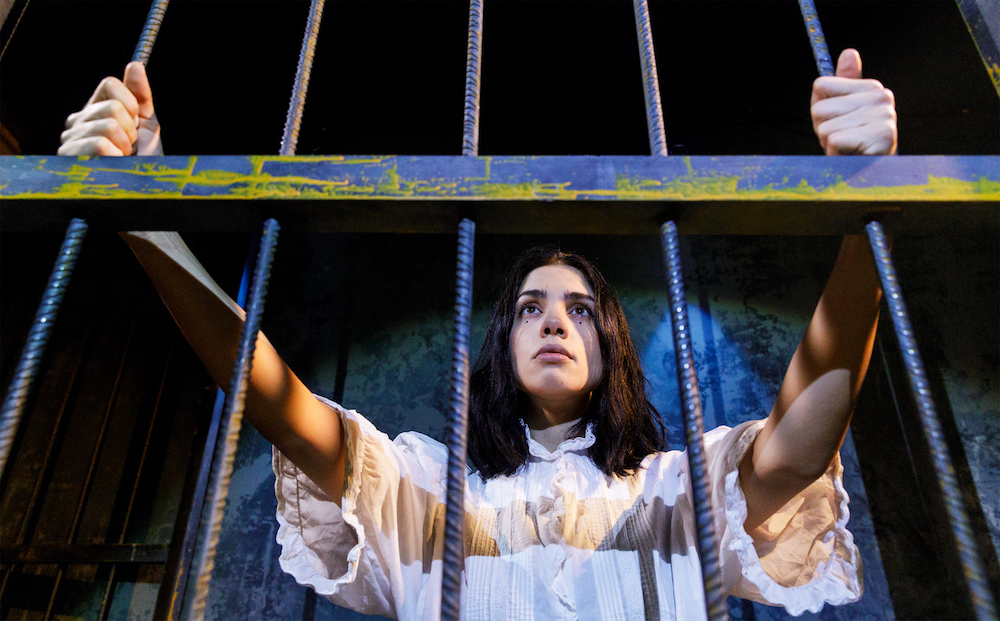
A new exhibition at London's Saatchi Gallery features two shows devised by the two most prominent members of Pussy Riot. But does this immersive experience of incarceration belittle the real suffering of prisoners? Howard Amos reports
In Russia, feminist protest group Pussy Riot are on the fringes of society and politics. Those who take part in their performances risk physical violence, police harassment and even jail time. Their colourful stunts happen on the street because they do not have access to institutional platforms. And most ordinary Russians find them baffling, shocking or simply offensive.
Outside Russia, it is a different story. The political persecution Pussy Riot face in their home country has translated into something akin to celebrity status in the West, where their artistic work is more mainstream than marginal, and they are cheered by politicians and pop stars for standing up to the Kremlin. Pussy Riot’s Nadezhda Tolokonnikova and Maria Alyokhina have met a US presidential candidate, appeared in hit US television series House of Cards and cooperate with leading theatres, galleries and performers.
Some would argue Pussy Riot was even designed to appeal to an English-language audience (and to antagonise a nationalistic Russian political elite). Their name has always been in English and is difficult, if not impossible, to translate into Russian.
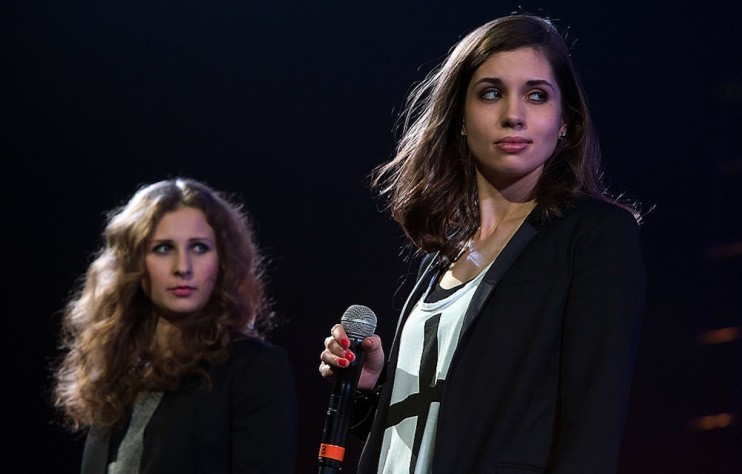
There are a number of myths about Pussy Riot, many of which are generated as they shift to the West. One of these is that they are a cohesive “group.” Just three members of the original political art collective were put on trial in 2012 after their performance of a punk prayer in Moscow’s Christ the Saviour Cathedral: Tolokonnikova, then aged 23, Alyokhina, then 24, and Yekaterina Samutsevich, then 29 (others involved in that infamous protest were never identified or arrested). Samutsevich received a suspended sentence while Alyokhina and Tolokonnikova served almost two years behind bars.
When the two women emerged from prison, their global profile meant Pussy Riot took on a new meaning. Tolokonnikova and Alyokhina still maintain that anyone can join Pussy Riot by donning a colourful balaclava, but, in fact, they personify the formerly anonymous brand. They give regular interviews and tour the world. Samutsevich has disappeared from the public eye, rarely speaks to journalists and does not take part in protests.
There are a number of myths about Pussy Riot, many of which are generated as they shift to the West. One of these is that they are a cohesive “group”
In their latest foray abroad, Alyokhina and Tolokonnikova last week launched separate shows in London as part of the Saatchi Gallery’s new exhibition, Art Riot: Post-Soviet Actionism. Tolokonnikova has devised an immersive theatre experience, Inside Pussy Riot, in conjunction with UK theatre company Les Enfants Terrible, while Alyokhina’s show Riot Days (after the title of her recent book) is staged by her Pussy Riot Theatre group. Both are sponsored by London-based banker Igor Tsukanov and accompany the Saatchi Gallery’s exhibition, which features other performers including Oleg Kulik, who mostly appears naked as a dog, and Pyotr Pavlensky (currently in a French prison), known for nailing his scrotum to the cobbles of Red Square.
Marat Guelman, the exhibition’s curator who emigrated from Russia to Montenegro in 2015, says the idea was to display “hero-artists” whose personalities are more important than the art. He wanted to tell Russian stories for a foreign audience, and help non-Russians understand what these artists were protesting against.
“What did Pussy Riot do?” asks Guelman during an interview at the opening last week. “They created an image of Putin that is opposite to themselves. Putin is a man, they are women. Putin is old, they are young. Putin is grey, they are colourful. Putin is in the Kremlin, they are in prison.”
Neither Tolokonnikova or Alyokhina made an appearance at the other’s show. Once close friends, the relationship between the two women appears to have cooled. They no longer collaborate artistically and are rarely seen together. In a recent interview, Tolokonnikova mentioned a “friend who is fucking a fascist” — apparently a reference to Alyokhina, who is currently dating a prominent Orthodox Christian activist.
Their two London theatre projects respond to similar questions: both are reflections on their experiences of protest and jail and both struggle with how to take Pussy Riot out of its Russian context without it becoming nothing more than a commercialized cultural commodity. But they were developed separately and take very different approaches.
“You’re not doing a political protest in order to be marginal, you are doing a political protest in order to be heard,” Tolokonnikova told me
Alyokhina’s Riot Days is a dramatic retelling of her new book, part memoir part call to arms. To a relentless beat, Alyokhina and two actors from the Belarus Free Theatre tell the tale of Pussy Riot’s protests, their arrest in 2012, trial and imprisonment. They speak (or shout) in Russian with the English translation appearing behind them on a screen playing footage of Russian riot police and Pussy Riot protests. The show opened on Friday at the Islington Assembly Hall, where the audience booed Putin and cheered and whooped as Alyokhina described moments of defiance. It is due to go on tour across the UK and Ireland in the coming weeks.
Tolokonnikova has tried to refashion Pussy Riot as a universal phenomenon. Russia is barely mentioned in her one-hour Inside Pussy Riot immersive project, which opened last week in a series of specially-erected rooms in the Saatchi Gallery. The enemy is not the Russian state, it is Calumnium, a fictional authoritarian regime crossed with a circus troupe (a judge is a screeching marionette and the police wear clown make-up). In one room, a faux stained-glass window crassly shows a mushroom cloud hanging over the charred remains of Grenfell Tower, the London housing block that caught fire in June. Somewhat bafflingly, it is surrounded by the leering faces of some of the world’s political elite: Donald Trump, Vladimir Putin, UK politician Nigel Farage, media baron Robert Murdoch, UK Foreign Secretary Boris Johnson and former White House chief strategist Steve Bannon.
“All my life I have been trying to do political art and my goal is to make people sympathetic to certain causes,” Tolokonnikova says in an interview the weekend before the opening of Inside Pussy Riot. “You’re not doing a political protest in order to be marginal, you are doing a political protest in order to be heard.”
The differences between Alyokhina and Tolokonnikova are not just something that has become visible through their London theatre projects. Tolokonnikova’s drive to take Pussy Riot away from its Russian roots (and its punk origins) was clearly visible in her new single, Police State, released earlier this month ahead of an upcoming album. The pop tune — sung in English — accompanies a video featuring US actress Chloe Sevigny in which a police officer beats children’s toys.
Alyokhina is more interested in Russian political campaigns and has taken part in several street protests this year calling for the release of Oleg Sentsov, a Ukrainian filmmaker serving a 20-year jail sentence in Russia for opposing the annexation of Crimea.
Their 2012 trial and imprisonment in Russia means Tolokonnikova and Alyokhina can never again hope to go unrecognised, even under coloured balaclavas. And their contrasting London projects reveal their different responses to the pressures of notoriety — and the paradox of hate at home and a too easy adulation in the West. Tolokonnikova’s Inside Pussy Riot shows how branding Pussy Riot a global movement and inflating Putin’s Kremlin with a malevolent international elite is confusing and, ultimately, lazy. And it offers a warning: when some ideas are taken too far from their context, they become meaningless.
_-_courtesy_of_Jonas_Akerlund.jpg)

